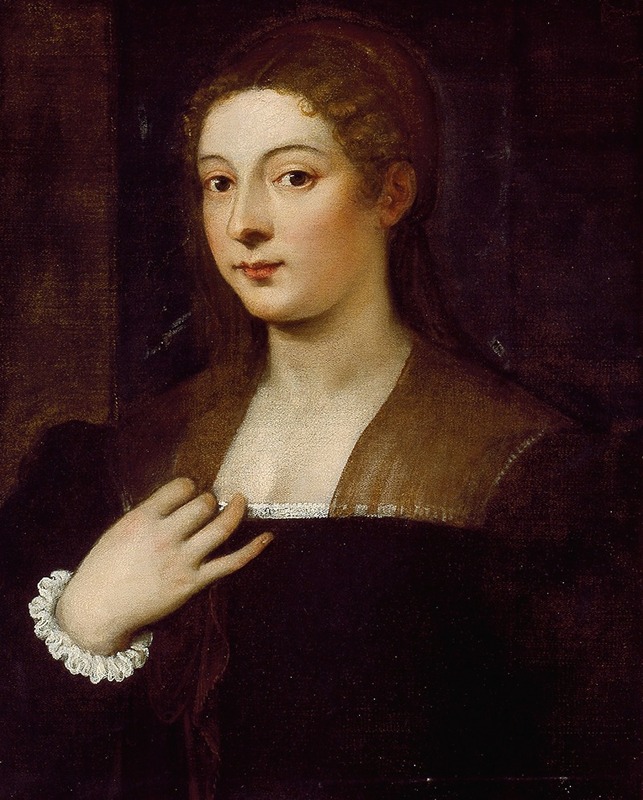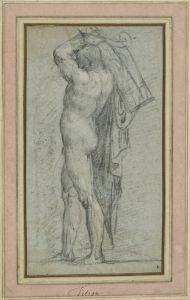
Portrait of a Lady
A hand-painted replica of Titian’s masterpiece Portrait of a Lady, meticulously crafted by professional artists to capture the true essence of the original. Each piece is created with museum-quality canvas and rare mineral pigments, carefully painted by experienced artists with delicate brushstrokes and rich, layered colors to perfectly recreate the texture of the original artwork. Unlike machine-printed reproductions, this hand-painted version brings the painting to life, infused with the artist’s emotions and skill in every stroke. Whether for personal collection or home decoration, it instantly elevates the artistic atmosphere of any space.
"Portrait of a Lady" by Titian is a renowned painting attributed to the Italian Renaissance master Tiziano Vecelli, commonly known as Titian. This artwork exemplifies Titian's exceptional skill in portraiture, a genre in which he excelled throughout his prolific career. Although the exact date of the painting's creation is not definitively known, it is generally believed to have been completed during the mid-16th century, a period when Titian was at the height of his artistic powers.
Titian was born in Pieve di Cadore, near Belluno, around 1488-1490, and he became one of the leading figures of the Venetian school of the Italian Renaissance. His work is characterized by its vivid use of color, masterful composition, and the ability to convey the personality and status of his subjects. "Portrait of a Lady" is a testament to these qualities, showcasing his ability to capture the essence of the sitter with remarkable subtlety and depth.
The painting depicts a woman of apparent nobility, dressed in luxurious attire that reflects her high social standing. Her clothing is rendered with meticulous attention to detail, highlighting Titian's skill in depicting textures and fabrics. The use of rich colors, particularly the deep reds and golds, is typical of Titian's palette and contributes to the painting's overall sense of opulence and elegance.
The identity of the lady in the portrait remains unknown, as is the case with many of Titian's portraits. This anonymity adds an element of mystery to the artwork, inviting viewers to speculate about her life and status. Despite the lack of specific information about the sitter, Titian's portrayal is imbued with a sense of individuality and presence, suggesting a woman of intelligence and poise.
Titian's portraits were highly sought after by the European elite, and his clientele included some of the most powerful figures of his time, such as Emperor Charles V and King Philip II of Spain. His ability to capture the likeness and character of his subjects made him a favorite among the aristocracy and ensured his lasting reputation as one of the greatest portraitists in art history.
"Portrait of a Lady" is housed in the Kunsthistorisches Museum in Vienna, Austria, where it continues to be admired by art enthusiasts and scholars alike. The painting is an important example of Titian's contribution to the development of portraiture during the Renaissance, illustrating his innovative approach to capturing the human form and spirit.
In summary, "Portrait of a Lady" by Titian is a masterful example of Renaissance portraiture, showcasing the artist's exceptional ability to convey the elegance and individuality of his subjects. Through his use of color, composition, and attention to detail, Titian created a timeless work that continues to captivate audiences and affirm his status as one of the foremost painters of his era.


















